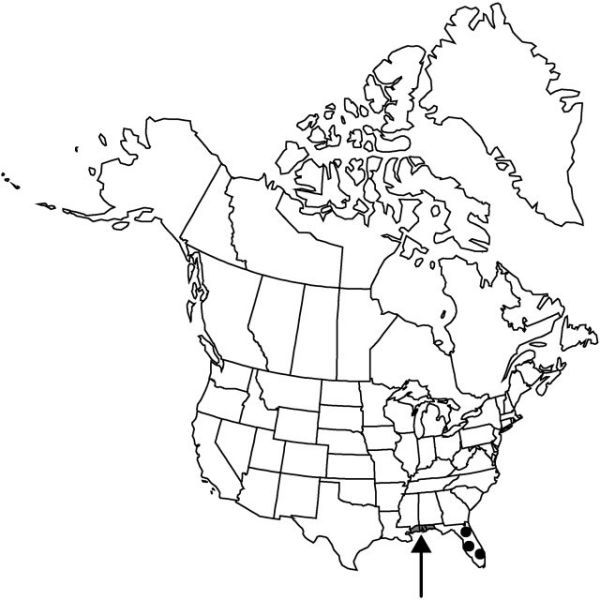Zephyranthes citrina
Bot. Mag. 108: plate 6605. 1882.
Leaf blade dull green, to 4 mm wide. Spathe 1.6–2.6 cm. Flowers erect; perianth lemon yellow, funnelform, 3.1–5 cm; perianth tube green, 0.7–1 cm, increasing in diam., less than 1/3 perianth length, ca. 1/2 (1/3–3/4) filament length, less than 1/2 spathe length; tepals rarely reflexed; stamens diverging, in 2 distinctly subequal sets; filaments filiform, subequal, 1.2–2 cm; anthers 5–7 mm; style longer than perianth tube; stigma capitate, usually among or below anthers, not exserted more than 1 mm beyond anthers; pedicel 2.3–4.4 cm, usually longer than spathe. 2n = 48.
Phenology: Flowering summer (Jul–Sep).
Habitat: Moist, sandy loam
Elevation: 0–100 m
Distribution

Introduced; Ala., Fla., Miss., West Indies, Central America, South America.
Discussion
In the original description of Zephyranthes citrina, Baker stated that Messrs. Veitch (Chelsea, England) brought it to him in flower and that they believed it had come to them from Demerara (Guyana). The type specimen is in the Kew Herbarium, where there are also specimens of this species from areas where it clearly is not native: tropical Africa, the Malay Peninsula, and India. It is also found in the West Indies (Cuba) and Central America (Panama). This species has naturalized widely from cultivation, and considerably more work is needed to determine its native distribution.
Selected References
None.